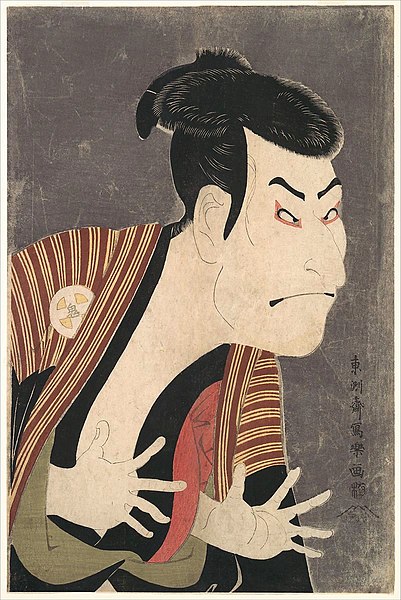The Treasury of Loyal Retainers is an 11-act bunraku puppet play composed in 1748. It is one of the most popular Japanese plays, ranked with Zeami's Matsukaze, although the vivid action of Chūshingura differs dramatically from Matsukaze.
Utagawa Kuniyoshi, The Monster's Chūshingura (Bakemono Chūshingura), ca. 1836, Princeton University Art Museum, Acts 1–4 of the Kanadehon Chūshingura with act one at top right, act two at bottom right, act three at top left, act four at bottom left
Utagawa Kuniyoshi, The Monster's Chūshingura (Bakemono Chūshingura), ca. 1836, Princeton University Art Museum, Acts 5–8 of the Kanadehon Chūshingura with act five at top right, act six at bottom right, act seven at top left, act eight at bottom left
Utagawa Kuniyoshi, The Monster's Chūshingura (Bakemono Chūshingura), ca. 1836, Princeton University Art Museum, Acts 9–11 of the Kanadehon Chūshingura with act nine at top right, act ten at bottom right, act eleven, scene 1, at top left, act eleven, scene 2 at bottom left
Kabuki is a classical form of Japanese theatre, mixing dramatic performance with traditional dance. Kabuki theatre is known for its heavily stylised performances, its glamorous, highly decorated costumes, and for the elaborate kumadori make-up worn by some of its performers.
The July 1858 production of Shibaraku at the Ichimura-za theater theatre in Edo. Triptych woodblock print by Utagawa Toyokuni III.
Onoe Kikugorō VI as Umeō-maru in Sugawara Denju Tenarai Kagami
The earliest portrait of Izumo no Okuni, the founder of kabuki (1600s)
Oniji Ōtani III (Nakazō Nakamura II) as Edobee in the May 1794 production of Koi Nyōbo Somewake Tazuna







